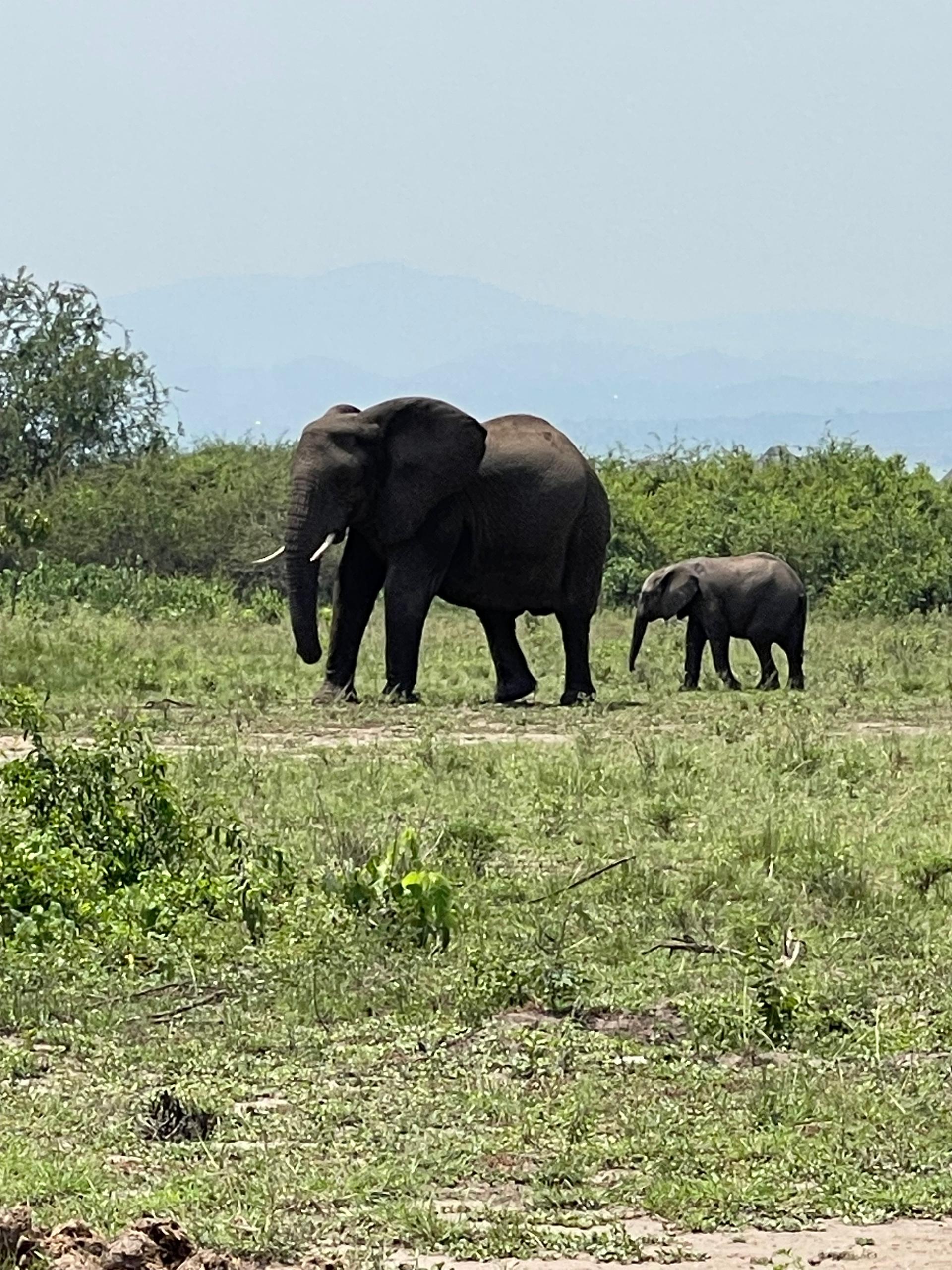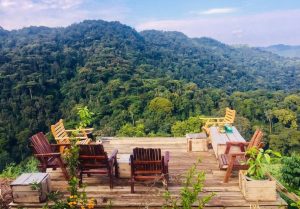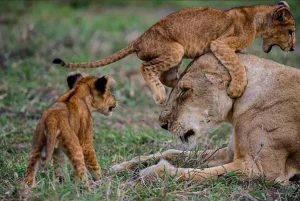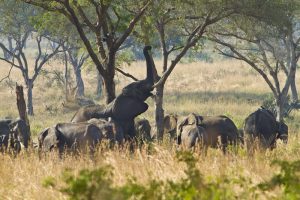Uganda, often called the “Pearl of Africa,” is one of the most beautiful countries on the continent. From lush forests and snowcapped mountains to rolling savannahs and powerful waterfalls, Uganda offers a rare combination of wildlife, adventure, culture, and relaxation. Whether you want to trek endangered mountain gorillas, witness the mighty Nile River, or explore hidden islands, Uganda has something for every traveler. Uganda Best Travel Destinations
What is the best place to visit in Uganda for gorilla trekking?
The Bwindi Impenetrable National Park is the number one destination in Uganda for gorilla trekking. Located in the southwest of the country, this UNESCO World Heritage Site is home to nearly half of the world’s remaining mountain gorillas. Trekking through dense rainforest to spend an hour with a gorilla family is one of the most unforgettable wildlife experiences on Earth.
Permits are required for gorilla trekking, and they are limited to ensure conservation, so booking in advance is essential. Bwindi also offers stunning biodiversity, with over 350 bird species and a variety of primates. The best time to visit is during the dry seasons, from June to August and December to February, when trekking trails are less muddy. Uganda Best Travel Destinations
Where can you see tree-climbing lions in Uganda?
If you want to see tree-climbing lions, head to Queen Elizabeth National Park in western Uganda. This national park is famous for its rare lions that spend time lounging in the branches of fig trees. Apart from lions, the park offers sightings of elephants, buffalo, hippos, and over 600 bird species.
The Ishasha Sector of Queen Elizabeth is where most visitors spot tree-climbing lions, making it a highlight of any Ugandan safari. Game drives in the park also showcase the Kazinga Channel, where you can take a boat cruise to see hippos, crocodiles, and abundant birdlife up close.
What is the most beautiful national park in Uganda?
While every national park in Uganda has its charm, Murchison Falls National Park is often considered the most beautiful. It is home to the world’s most powerful waterfall, where the Nile River squeezes through a narrow gorge before plunging 43 meters with immense force. The sight and sound of Murchison Falls are truly breathtaking.
The park is also rich in wildlife, offering opportunities to see elephants, giraffes, lions, leopards, and hundreds of bird species. A boat cruise along the Nile provides close encounters with hippos and crocodiles, while hikes around the falls reveal panoramic views of Uganda’s landscapes.
Which is better to visit: Bwindi or Murchison Falls?
Both Bwindi Impenetrable National Park and Murchison Falls National Park are exceptional, but the choice depends on your travel interests.
- If you want to see mountain gorillas, Bwindi is the only choice. The trekking experience is once-in-a-lifetime and a major reason travelers visit Uganda.
- If you prefer classic safaris and dramatic landscapes, Murchison Falls offers abundant wildlife and the most powerful waterfall in the world.
Many visitors combine both destinations in a single trip, as Uganda’s diverse attractions make it worth exploring multiple regions.
What are the top safari destinations in Uganda?
Uganda is a safari paradise, with several parks offering unique wildlife experiences. The top safari destinations include:
- Queen Elizabeth National Park – Famous for tree-climbing lions and boat cruises.
- Murchison Falls National Park – Known for big game and powerful waterfalls.
- Kidepo Valley National Park – A remote and untouched park with lions, cheetahs, and dramatic landscapes.
- Lake Mburo National Park – Ideal for birdwatching, zebras, and horseback safaris.
Each park offers a distinct safari style, from adventurous remote explorations to family-friendly wildlife encounters.
What is the best time of year to visit Uganda for wildlife?
The best time to visit Uganda for wildlife safaris and gorilla trekking is during the dry seasons:
- June to August
- December to February
During these months, roads are more accessible, trails are drier, and animals gather around water sources, making them easier to spot. The wet seasons (March–May and September–November) bring lush greenery and fewer tourists, but trails can be muddy, and travel is more challenging.
How many days do you need in Uganda for a safari?
To fully experience Uganda’s wildlife and natural attractions, most travelers spend 7 to 10 days in the country. A typical itinerary includes:
- 2–3 days in Bwindi for gorilla trekking.
- 2–3 days in Queen Elizabeth or Murchison Falls for safari drives.
- 2 days in Jinja or Lake Bunyonyi for relaxation and adventure.
Shorter trips are possible, but a week or more allows for a balance of adventure, wildlife, and cultural experiences.
What is the source of the Nile in Uganda?
The source of the Nile is located in Jinja, a vibrant town on the shores of Lake Victoria. Here, the Nile River begins its 6,650-kilometer journey through Africa before reaching the Mediterranean Sea.
Jinja is not only historically significant but also an adventure hub. Travelers can enjoy white-water rafting, kayaking, bungee jumping, and quad biking along the Nile. Sunset cruises on the river offer a relaxing way to appreciate the scenery.
Can you visit the Ssese Islands from Kampala?
Yes, the Ssese Islands can be accessed from Kampala via ferry rides across Lake Victoria. These islands are a perfect escape for travelers looking for sandy beaches, palm trees, and a peaceful atmosphere.
The Ssese Islands are ideal for relaxation, birdwatching, fishing, and nature walks. Accommodation ranges from budget guesthouses to mid-range lodges. They are less crowded compared to other attractions, making them a hidden gem in Uganda.
Which mountains are best for hiking in Uganda?
The Rwenzori Mountains, also called the “Mountains of the Moon,” are the best destination for hiking in Uganda. They feature snowcapped peaks, glaciers, and lush valleys. Mount Stanley, the highest peak, rises to 5,109 meters, making it one of Africa’s highest mountains.
The Rwenzori Mountains National Park offers trekking routes ranging from short hikes to 10-day expeditions. The hikes pass through unique ecosystems, from rainforest to alpine meadows. Other notable hiking destinations include Mount Elgon in eastern Uganda, known for its vast caldera, and Sipi Falls, a popular trekking spot with stunning waterfalls.
Is Uganda safe for tourists?
Uganda is generally safe for tourists, especially in popular travel destinations such as national parks, Kampala, Jinja, and major towns. However, as with any country, travelers should take basic precautions:
- Use registered guides for treks and safaris.
- Avoid isolated areas at night.
- Keep valuables secure.
- Follow park rules, especially during gorilla trekking and safaris.
Ugandans are known for their warm hospitality, and tourism is an important part of the economy, so safety measures are well enforced.
Do you need a visa to travel to Uganda?
Yes, most travelers need a visa to enter Uganda. Tourists can apply online for an Uganda e-visa before traveling. Single-entry tourist visas are typically valid for 90 days.
Alternatively, visitors can apply for the East Africa Tourist Visa, which allows entry to Uganda, Kenya, and Rwanda with one permit, making it ideal for multi-country safaris. Travelers should also check vaccination requirements, such as the yellow fever certificate, before departure.
What are the cultural attractions in Kampala?
Uganda’s capital, Kampala, is a vibrant city with a rich cultural and historical heritage. Key attractions include:
- Kasubi Tombs – A UNESCO World Heritage Site and burial ground for Buganda kings.
- Uganda Museum – Showcasing the country’s history and culture.
- Ndere Cultural Centre – Famous for traditional music and dance performances.
- Namugongo Martyrs Shrine – A religious site commemorating Christian martyrs.
Kampala is also a lively city for nightlife, shopping, and local cuisine, making it worth a stop on any Ugandan trip.
Where is Lake Bunyonyi located in Uganda?
Lake Bunyonyi is located in southwestern Uganda, near Kabale, close to the border with Rwanda. It is one of the deepest lakes in Africa and is dotted with 29 scenic islands.
The lake is famous for canoeing, birdwatching, and relaxing in a tranquil environment. Its name means “place of many little birds,” making it a paradise for bird enthusiasts. The calm waters and picturesque views make Lake Bunyonyi a favorite retreat after gorilla trekking in Bwindi.
Which is the most remote national park in Uganda?
The most remote national park in Uganda is Kidepo Valley National Park, located in the far northeast near the borders with South Sudan and Kenya. Because of its remote location, few tourists visit, making it one of Africa’s best-kept safari secrets. Uganda Best Travel Destinations
Kidepo offers vast savannah landscapes, rugged mountains, and diverse wildlife, including lions, cheetahs, elephants, zebras, and giraffes. It also provides cultural encounters with the Karamojong people, who live near the park. For adventurous travelers, Kidepo is an unmatched destination.
Final Thoughts
Uganda truly lives up to its title as the Pearl of Africa, offering a wide range of experiences from gorilla trekking and safaris to mountain hikes and cultural explorations. Whether you are seeking wildlife, adventure, or relaxation, Uganda’s travel destinations will leave lasting memories. Uganda Best Travel Destinations




